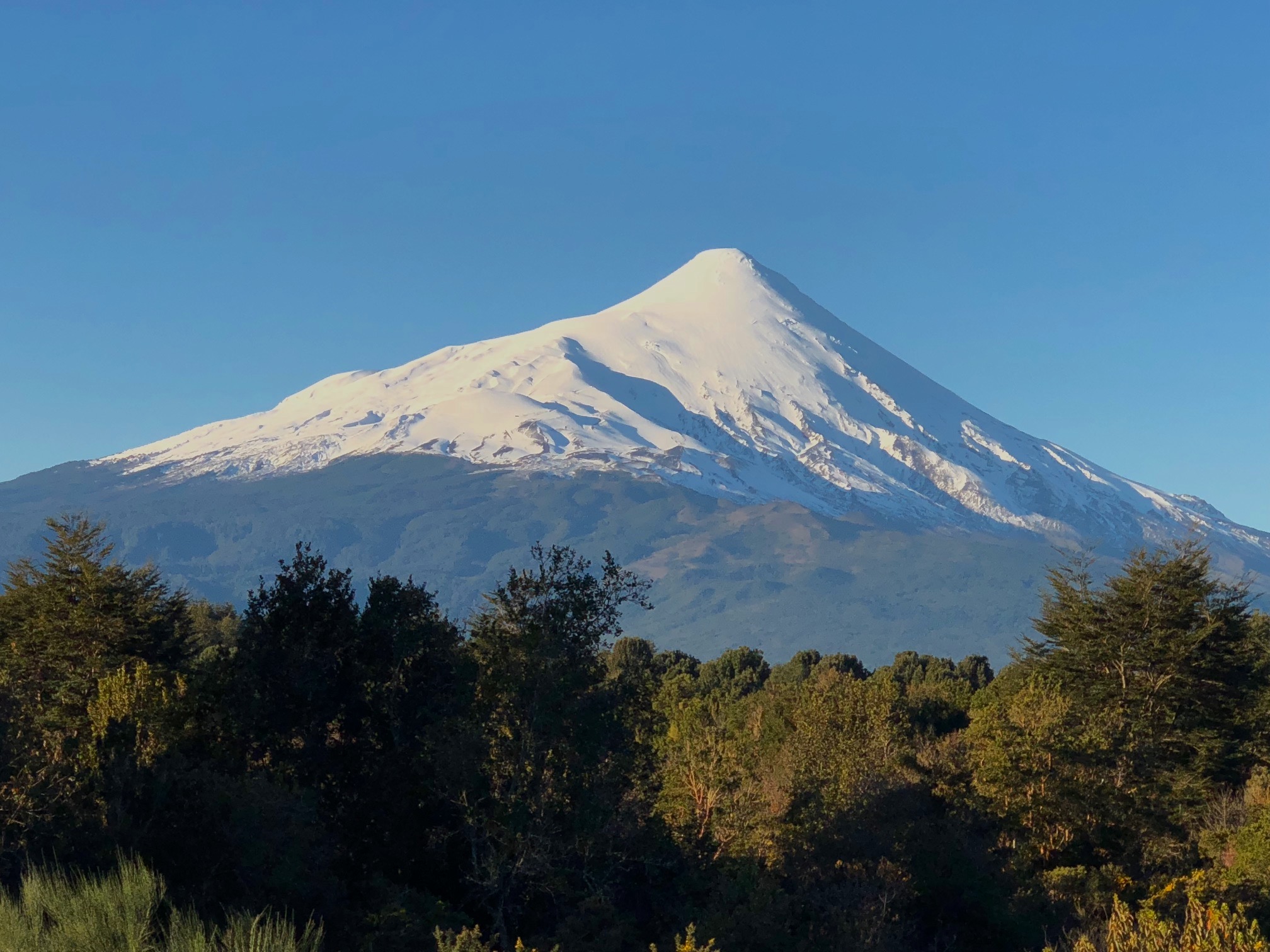Photos: Diane Slawych
Chile doesn’t lack for remarkable hiking opportunities, whether it’s treks in Torres del Paine National Park (you’ve probably seen the park’s granite spires in tourist brochures), or the ultimate trail – the Sendero de Chile – an 8,000-kilometre cross-country adventure and one of the longest paths in the world!
There are times though when you want access to great scenery but without the sweat – in other words, easy trails that can be completed in a few hours instead of a few days.
Luckily that’s easy to find within Chile’s extensive park system, where it’s possible to see giant trees, active volcanoes, and even rare wildlife – all without overly exerting yourself.
The first thing to note is that the seasons in Chile are reversed from the northern hemisphere, so the height of summer is between December and February. We travel in early September – spring, when temperatures are cooler, though weather can be variable (the further south the more extreme).
Vicente Perez Rosales National Park
In the shoulder season, there are fewer people, if any, on some of the trails in the country, including in Chile’s oldest national park, Vicente Perez Rosales (established in 1926). Located in the Lake District, about 60 kilometres from Puerto Varas, the park’s 2,510 square kilometres contain mountains, waterfalls, lakes and several trails that range from one km to 40 km in length.
After a one-hour drive along the south shore of Lake Llanquihue – with views of the Osorno and Calbuco volcanoes – we arrive at the Laguna Verde trail. A 20-minute walk on a well-marked path leads to, as the name suggests, a green lagoon that, on this day, shimmers in the early morning sun. A sign in Spanish explains the science behind the emerald colour, something about algae being suspended near the surface of the water.
From here it’s a short drive to the start of El Solitario, described as a six-kilometre easy trek on the slopes of the Osorno volcano. Walking in the shade of tall evergreens that line the route, while birdsong echoes from the treetops, it’s hard to envision anything but a state of perpetual tranquility.
Yet there are reminders of the force of nature. Osorno is active and though we had no plans to climb it, the summit was closed for safety reasons at the time of this writing. And one of the most dramatic recent events occurred in April 2015, when the Calbuco volcano erupted with little warning sending a large column of ash into the air.
“This is a Canelo tree,” explains Isabel Vergara, our guide from tour company Birds of Chile, who shakes me from my reverie. “It’s sacred for the Mapuche Huilliche people. The bark is rich in Vitamin C and the leaves are used to treat rheumatism, wounds and stomach pains.” Canelo, I later learn, is apparently the Spanish name for China Berry. Vergara shares her wealth of knowledge on the other trees we pass along the route including the Coigues (Beech), Arrayanes (Myrtle), Avellanos (Hazelnut), Alerce (Larch), and Cipres (Cypress).
Less than an hour later, the trail ends in a clearing that reveals a dramatic backdrop – huge mountainsides draped in foliage behind tall ridges of black volcanic sand.
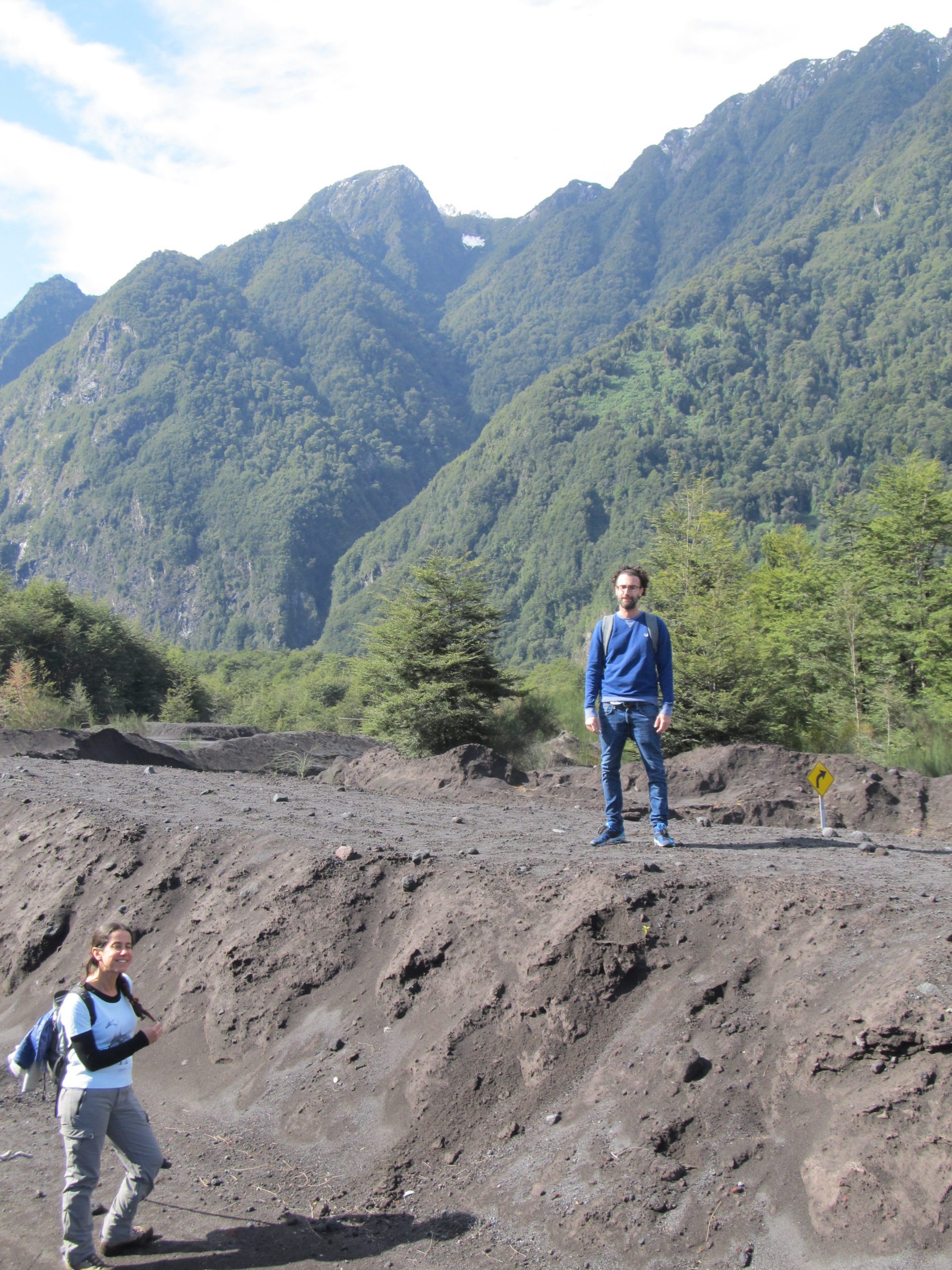

“That’s a tuique,” says Vergara of the bird that lands on the sand about 30 metres away from our picnic table. “It’s a type of falcon.” Soon, a second one swoops in and for the next hour I watch their movements – pacing aimlessly, then taking off and returning again to the same spot.
We’ve seen only a handful of people on the trails and at the lake so far, but at the Petrohue River Waterfalls, six kilometers away, it’s a different story. The trails – with names such as Bride’s Veil, Lovers Trail, Rincon de Osorno and Desolation Trail – attract many more people. The may be due to the fact that the paths are short and easy, and the scenery is pleasant and varied – native forest punctuated by cascades of water that tumble through volcanic rock canyons carved by lava.
Chiloe
Next day we board a ferry bound for the island of Chiloe, which mainlanders often say resembles Chile the way it was 40 years ago. It’s known for its UNESCO World Heritage Site churches, most of them wooden structures built without nails, dating to the 18th and 19th centuries. But it’s a good destination for nature lovers too.
On the ferry ride over and within an hour of landing we’ve already seen a few dozen species of birds including the Steamer Duck (a Patagonian endemic), the Chilean Flicker, Black-necked Swans, and the Imperial Cormorant, which is often mistaken for a penguin.
Tantauco Park
Though this park boasts the world’s largest mammal – the blue whale, and the smallest marsupial – the mountain monkey – I am more interested in seeing the pudu, which I’d read about in the information pavilion. This cute looking animal – the world’s smallest deer, measures only about a foot-and-a-half tall (17 inches or 44 centimetres) and is listed as a near-threatened species.
If you could spot it anywhere it might be in this private 100,000-hectare preserve, in the remote south of the island which requires driving 18 kilometres on a dirt road to reach the park’s entrance. The park was purchased by billionaire entrepreneur and politician Sebastian Pinera and opened in 2005.
Chiloe is known for its frequent rains, so the heavy downpour that accompanies us on the drive to the park is not unusual, though it does dampen our spirits. Fortunately it turns into a drizzle by the time we arrive, but the paths are wet and I step in a mud puddle almost immediately.
A dozen hiking tails have been established ranging from half a kilometer to 15-kilometres long. Due to the soggy trails, we take the short and easy Siempre Verde (Always Green) trail.
A wooden boardwalk leads to an enormous tree that a sign identifies as a Manio Hembra, a type of conifer. When you’re 30-metres tall and 800-years-old, you deserve some love, which may be what prompts our guide to reach over a wooden barrier that encircles the tree to plant a kiss on its rough hewn trunk.
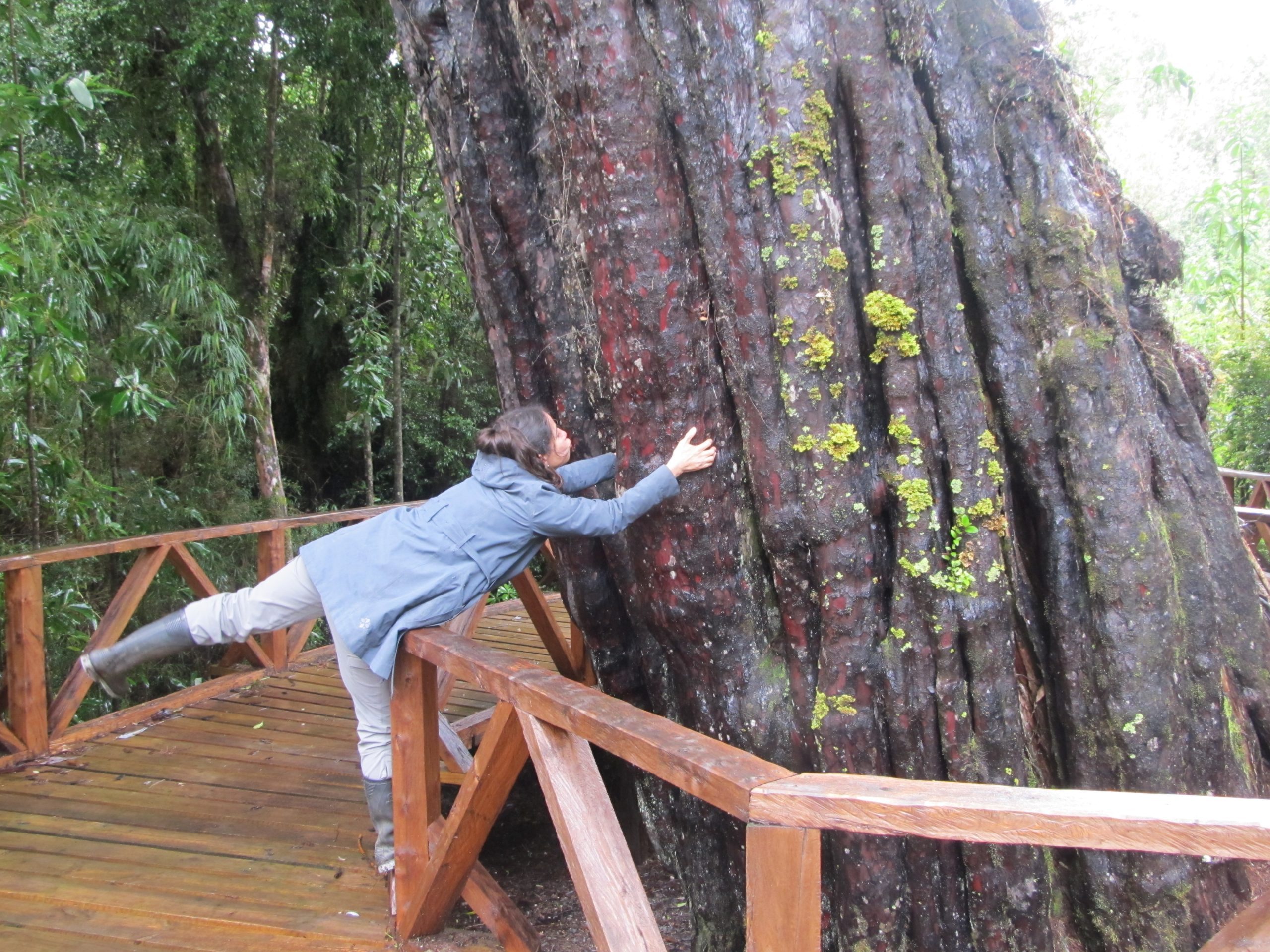

Given the weather, the rough road, and the time of year, it’s no surprise we see no one else on the trail. So when we arrive back at the ranger’s station we have the picnic area outside all to ourselves – sort of. As the guide removes the cellophane from bowls of gourmet pasta and salads, I catch a glimpse of what I think is a puppy dog.
But no, it’s a fox! And not just any fox, but the endangered Chiloe Fox, of which there are only about 600 remaining in the entire country, with about 300 of those on Chiloe Island. The disappointment over not seeing a pudu has suddenly evaporated, replaced by euphoria!
But the fox has trained its eyes on our lunch and appears determined to jump on the table at the first opportunity! Alarmed, the guide and I frantically rush to cover everything up, hoping the two other hikers in our group will come to our aid.
But instead they’re snapping photos of the animal! When it becomes clear we will not be able to enjoy lunch without constantly guarding our food from the sneaky fox, we reluctantly move indoors. The critter isn’t far behind though, scooping up crumbs of cheese we accidentally drop along the way.
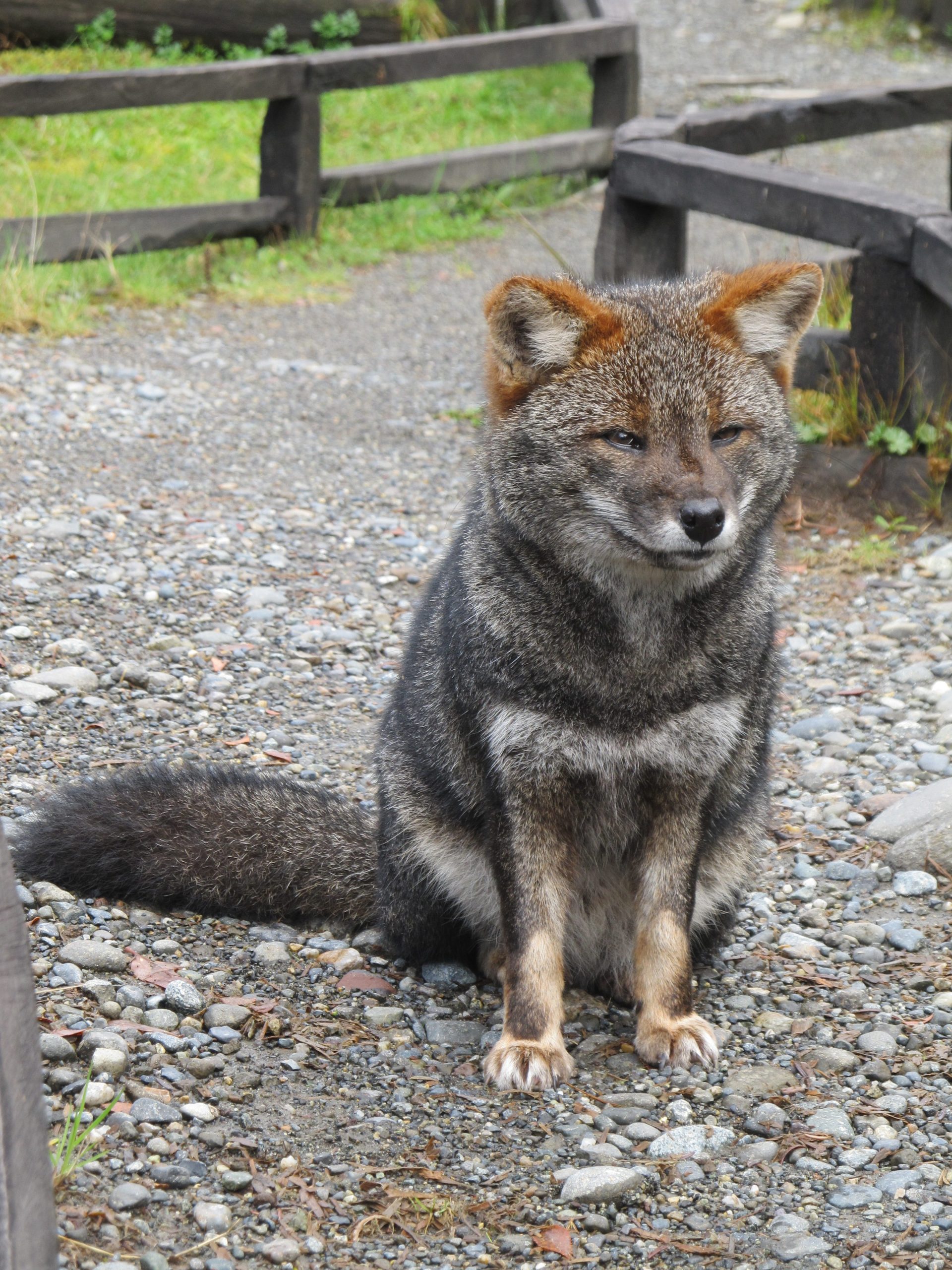

Chiloe National Park
Further up the wild Pacific coast, about midway point on the island, is Chiloe National Park. Unlike Darwin, who had to rely on indigenous inhabitants to help him get around, we have the advantage of several defined footpaths, some with boardwalks through the wetlands, others with various outdoor exhibits and displays highlighting the region’s heritage. The park is home to more than a hundred different birds, as well as the reclusive pudu and the Chiloe fox.
As anywhere on the island, it’s wise to be prepared for rain and come equipped with wool socks, water resistant footwear and a good raincoat.
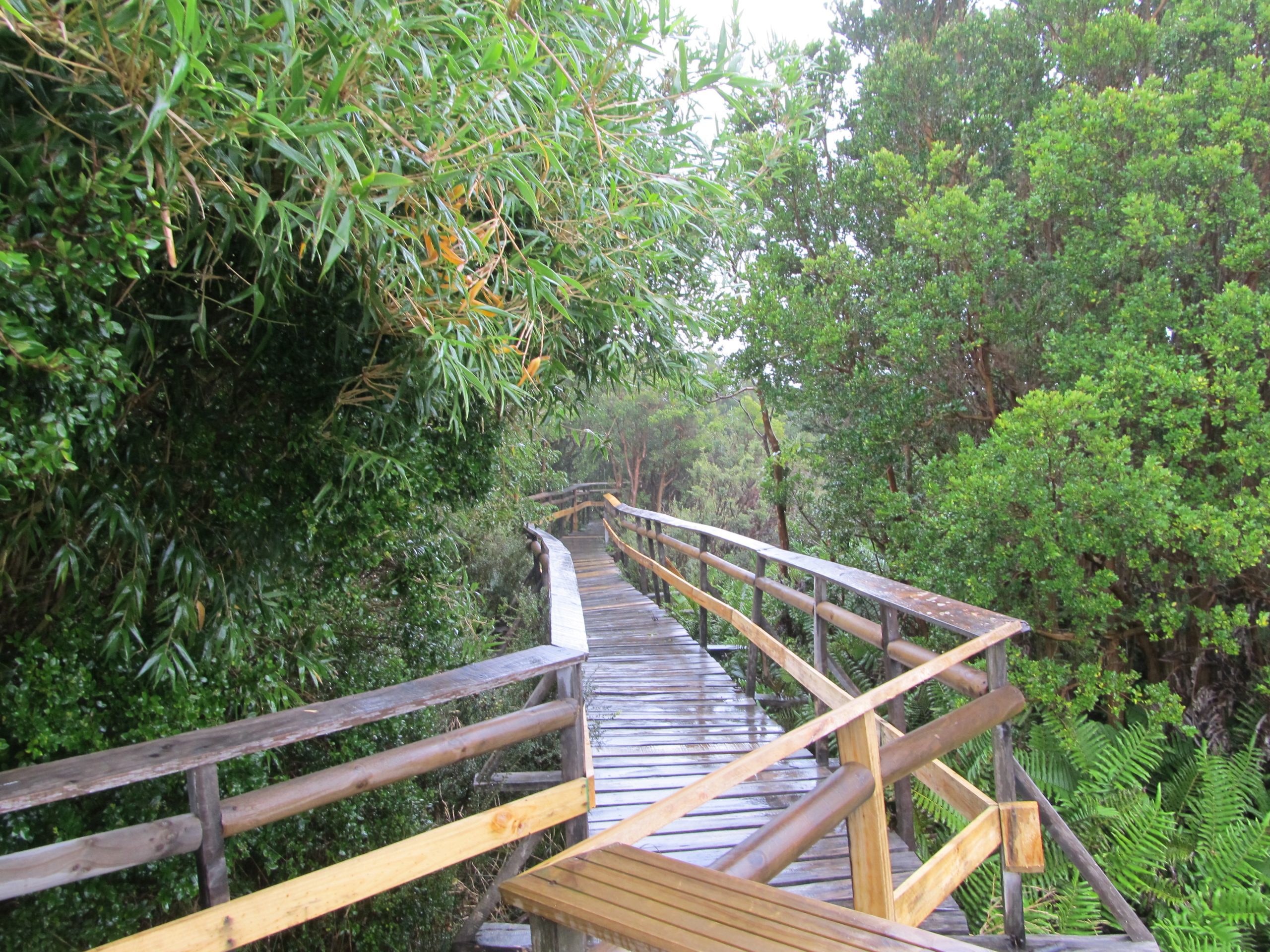

The park, in the island’s coast mountain range, is divided into three parts including Chanquin, which has most of the eight official hikes in the park’s Valdivian Forest.
Many of trails – we take one that leads to a lookout – are dominated by bamboo trees, ferns and evergreens. There are the familiar trees we’ve seen on the mainland – Hazelnut trees, the giant Coigue (Beech) trees, which can reach 40 metres in height, and the Arrayan trees, whose wood is ideal for smoking meats, and whose fruits were once used to make a fermented drink called chichi.
No visitor leaves Chiloe, without learning about its many mythological creatures. One of them is the Trauco, a powerful forest gnome who hides in the Olivillo (Shrubby Germander) tree, of which there are several in the park. Often depicted carrying an axe, he is said to be irresistible to young virgins, and often gets the blame when a woman becomes pregnant out of wedlock.
Penguins in Punihuil
One of the most accessible, popular and rewarding nature excursions in Chiloe, involves a trip out to a cove called Punihuil. Of note are the three islets off the coast that are a breeding ground for the Magellanic and the almost extinct Humboldt penguins. This mixed penguin colony is rare in Chile, which is partly why the three islets were declared a Natural Monument. You can join an organized tour or take a bus from Ancud and then hire a boat. The best time of year to see the penguins is from September to March when they’re breeding. It’s a scenic spot with colorful boats lining the beach, dramatic outcroppings rising up from the water near shore, and a string of seafood restaurants overlooking the view.


